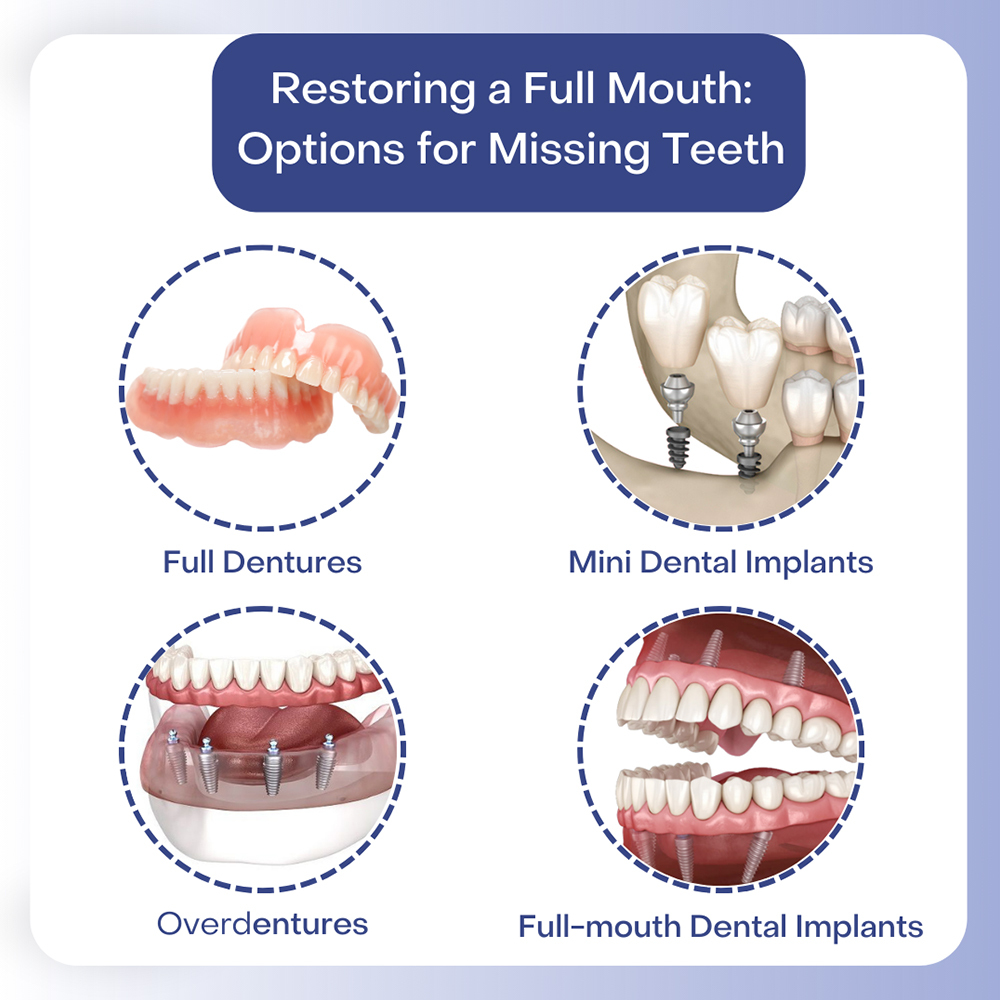The Definitive Guide for Dental Sense
Table of ContentsDental Sense - QuestionsThe smart Trick of Dental Sense That Nobody is Talking About10 Simple Techniques For Dental SenseDental Sense Things To Know Before You Get This
are medical gadgets surgically implanted into the jaw to bring back an individual's ability to chew or their appearance. They provide assistance for fabricated (phony) teeth, such as crowns, bridges, or dentures. When a tooth is lost due to injury or condition, an individual can experience complications such as quick bone loss, defective speech, or adjustments to chewing patterns that result in pain.Dental dental implant systems include a dental implant body and oral implant abutment and may also consist of an abutment fixation screw. Dental implant vs bridge. The dental implant body is surgically put in the jawbone in location of the tooth's origin. The oral implant abutment is normally affixed to the dental implant body by the joint fixation screw and extends through gum tissues into the mouth to support the connected synthetic teeth
(https://dental-sense.jimdosite.com/)Framework of The Oral Implant System choosing oral implants, talk to your oral provider concerning the potential advantages and threats, and whether you are a prospect for the procedure. Things to take into consideration: Your total health and wellness is an essential variable in establishing whether you are an excellent prospect for dental implants, the length of time it will require to recover, and how much time the dental implant may stay in area.
Smoking cigarettes may affect the recovery process and lower the lasting success of the dental implant. The healing procedure for the dental implant body may take several months or longer, throughout which time you typically have a temporary abutment instead of the tooth. the dental implant procedure: Meticulously comply with the dental hygiene guidelines provided to you by your dental supplier.
The Only Guide for Dental Sense
Implant failure can cause the need for an additional surgical treatment to deal with or replace the implant system. Brings back the capability to eat Brings back aesthetic look Assists keep the jawbone from reducing due to bone loss Protects the health of the surrounding bone and periodontals Helps keep nearby (close-by) teeth steady Boosts quality of life Damage to surrounding natural teeth throughout implant placement Injury to the surrounding tissues during surgery, such as sinus perforation Injury during surgical treatment (for instance, crack of surrounding jawbone) Poor feature, such as feeling like the teeth do not bite together usually A feeling that the tooth is loose or twisting in place arising from a joint screw loosening up Implant body failure (looseness of the implant body) because of systemic infection, which may be most likely in people with unchecked diabetes due to regional infection in bone and gums sustaining the implant body due to postponed healing, which may be more probable in clients who smoke Trouble cleaning the gums around the implant, causing bad oral health Neglected periodontal condition Post-surgical numbness as a result of nerve impingement or damage Constantly alert health treatment suppliers and imaging service technicians that you have dental implants prior to any type of magnetic resonance imaging (MRI) or x-ray treatments.
FDA is not mindful of any type of negative events reported for MRI or x-ray treatments with oral implants. Dental implants systems are usually made from materials that adhere to worldwide agreement requirements of the International Organization for Standardization (ISO) or ASTM International. These standards have information of what makes a safe material.

An oral implant is a framework that changes a missing tooth. With screw-like devices, the cosmetic surgeon inserts an implant into the jawbone, and it serves as an anchor for a fabricated tooth, called a crown. A device called an abutment links the artificial tooth to the dental implant. The crown is tailor-made to fit the person's mouth and match the color of their teeth.
The Buzz on Dental Sense
Some individuals are not qualified for dental implant surgical treatment. It is for dental surgeons to run on individuals with: intense illnessuncontrollable metabolic diseasebone or soft cells illness or infectionIf these problems are settled, an individual can have the surgical treatment. In, dental cosmetic surgeons avoid running on individuals with: If people with any of the above undertake oral implant surgery, there is a greater danger of the implant falling short.

Dental implant surgical treatment is a customized process. It's not the exact Discover More Here same for every person. Yet the adhering to gives a general overview of what you can anticipate your dental expert, dental specialist, periodontist or prosthodontist to do: Place the implant surgically. Provide you time to heal. Connect the article and last crown, bridge or denture.
Next off, your surgeon will meticulously put the oral implant into your jaw. If your implant is near the front of your mouth, your dental practitioner will make a temporary tooth for you to put on till you heal.
The Buzz on Dental Sense
Your supplier can inform you what to anticipate in your scenario. During the recovery stage, your jawbone needs to fuse to the oral implant. This procedure, called osseointegration, is vital for security and lasting success. This procedure can take anywhere from 3 to nine months. In some situations, it may take much longer.
Once your dental implant heals, your dental practitioner can connect the abutment (small connector article) and your last reconstruction (crown, bridge or denture). This typically takes regarding one hour to finish and may need a 2nd small surgical treatment. You should not really feel any type of discomfort throughout your dental implant treatment due to the fact that your provider will certainly use medicine to numb your gum tissues.